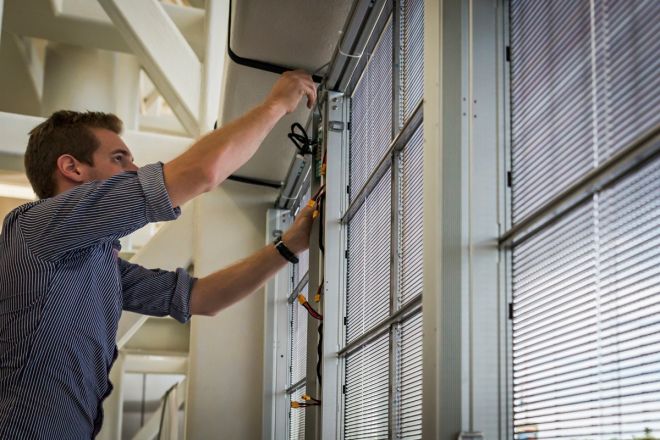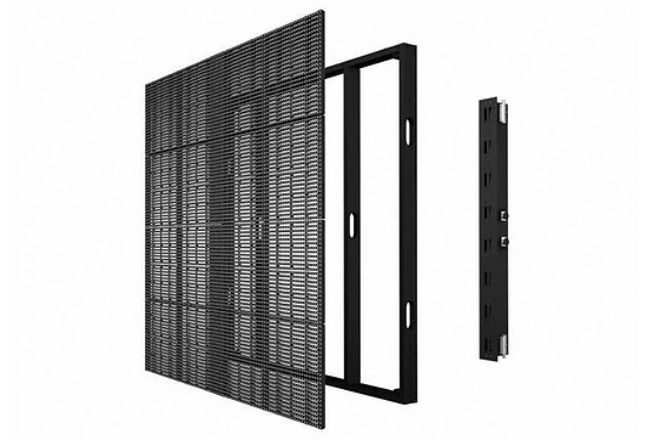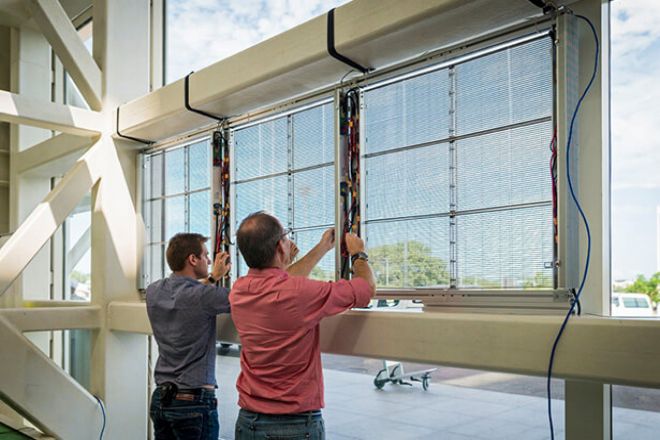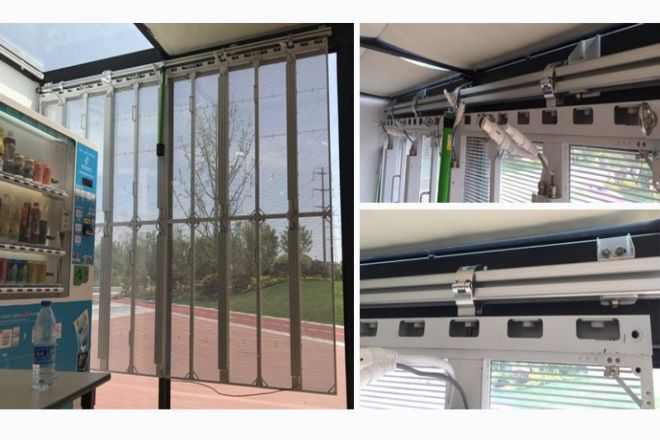Introduction

As one of the LED displays that have gradually emerged in recent years, the LED transparent screen has a different appearance from other LED displays. So, how is it installed?
This article will take you through its installation methods and steps.
1. A brief introduction to the LED transparent screen
A transparent LED screen is a special display technology. It consists of a series of lamp beads to form a light strip and then multiple sets of light strips to form a complete screen.
The main feature of this screen is its high permeability, which can reach 70% to 95% so that the audience can see the physical object behind the screen while watching the screen content.
This kind of display screen is usually installed behind tempered glass and is mainly used for commercial displays, such as shopping mall windows, store facades, etc. It can show pictures to pedestrians on the street without affecting them viewing the goods in the store.
In addition, transparent LED display screens are also widely used in architectural glass curtain walls, stage backgrounds, and other fields.
2. Preparation before installation

Before installing the LED transparent screen, a series of preparations need to be carried out to ensure the smooth progress of the installation process and that the final effect meets expectations. These preparations include:
- On-site survey and measurement:
The installation team should go to the site for survey and measurement, understand the specific environment, topography, and other factors, and confirm the size and installation location of the LED transparent screen to ensure that it is consistent with the site.
- Formulate the construction plan:
According to the on-site survey and measurement results, formulate a detailed construction plan, including installation location, installation method, fixing method, etc. The construction plan should take into account safety, feasibility, and efficiency.
- Prepare tools and materials:
Prepare necessary tools and materials according to the construction plan, such as lifting equipment, screwdrivers, wrenches, wires, cables, etc. At the same time, it is necessary to ensure that these tools and materials meet relevant standards and quality requirements.
- Evaluate the installation environment:
Evaluate the installation environment and understand the load-bearing capacity, power access, waterproof and dustproof requirements of the site, etc., to ensure the safety and feasibility of the installation process.
- Safety protection measures:
Set up isolation belts, protection nets, safety warning signs, and other safety protection measures at the installation site, prepare safety protection equipment, and ensure safe production in terms of awareness and equipment.
3. Installation method and steps

There are various installation methods for LED transparent screens, and the installation steps corresponding to different installation methods are also different.
1). Floor-supported installation:
This method is mainly used for exhibition screens, exhibition hall screens, etc. It mainly relies on the force of the steel structure, and there is no limit on the area and weight of the display. Specific installation steps include:
Determine the installation location and size and carry out site measurements.
Make and assemble steel frames to ensure their stability and load-bearing capacity.
Fix the LED transparent screen on the steel structure frame and adjust the flatness and verticality.
Connect the power cord and signal line for debugging and testing.
Wall-mounted installation: This installation method is mainly used outside the interior wall. Specific installation steps include:
Determine the installation position and the force point of the wall and carry out wall measurements.
Make installation structures on the wall, such as mounting boards or mounting racks.
Hang the LED transparent screen on the wall to ensure its stability and verticality.
Connect the power cord and signal line for debugging and testing.
2). Hanging installation:
This method is suitable for various on-site situations and can flexibly change the design requirements. Specific installation steps include:
Determine the installation location and lifting point and carry out site measurements.
Make and assemble lifting structures, such as hanging beams and hooks.
Use the hoisting equipment to lift the LED transparent screen, fix it on the hoisting structure, and adjust its position and level.
Connect the power cord and signal line for debugging and testing.
3). Wall-mounted installation:
Mainly used indoors or outdoors covered by walls. Specific installation steps include:
Determine the installation location and wall size and carry out wall measurements.
Make a hole in the wall or make an installation groove, and the size of the hole is consistent with the size of the display frame.
Embed the LED transparent screen into the wall to ensure its stability and flatness.
Connect the power cord and signal line for debugging and testing.
Note: The above are only some common LED transparent screen installation methods and corresponding steps. The actual installation process may vary due to specific product models, sizes, on-site environments, and other factors. Therefore, it is best to consult a professional installation team or refer to the installation instructions of the product before installation.
4. Safety precautions

Safety is always the most important consideration when installing LED transparent screens. Here are some key safety precautions:
1). Electrical safety:
Ensure that all electrical work is done by qualified electricians.
Be sure to cut off the power supply before making any electrical connection.
Use cables and connectors that meet the specifications and ensure that all connections are firm and reliable.
Check all electrical equipment regularly to ensure that they are in good condition.
2). Structural safety:
Ensure that the installation structure (such as steel frame, hoisting equipment, etc.) can withstand external loads such as the weight of the LED transparent screen and wind force.
Test the stability of the installation structure to ensure that it will not collapse or shake under windy or other bad weather conditions.
Use suitable fixtures (such as bolts, welding, etc.) to fix the LED transparent screen on the installation structure firmly.
3). Lightning protection and grounding:
In areas with heavy thunderstorms, be sure to install lightning protection equipment for LED transparent screens and effectively ground them.
Ensure that all metal parts (including frames, brackets, etc.) are effectively grounded to prevent damage caused by static electricity and lightning strikes.
4). Operation safety:
During the installation process, ensure that all staff wear appropriate safety equipment (such as safety helmets, seat belts, protective glasses, etc.).
Follow the correct handling and installation procedures to avoid screen damage or injury.
When working at high altitudes, be sure to use appropriate climbing equipment and safety protection measures.
5). Environmental safety:
Ensure that the installation site is clean, tidy, and free of debris to reduce the risk of falls and tripping.
The waste and garbage generated during the installation process should be cleaned up in time to keep the site tidy.
Conclusion
Through the detailed introduction of this tutorial, I believe you have mastered the installation methods and precautions of the transparent LED display.
But we must pay attention to safety. If we can’t do it ourselves, please seek professional help in time.
If you want to know more about LED displays, please get in touch with us!
